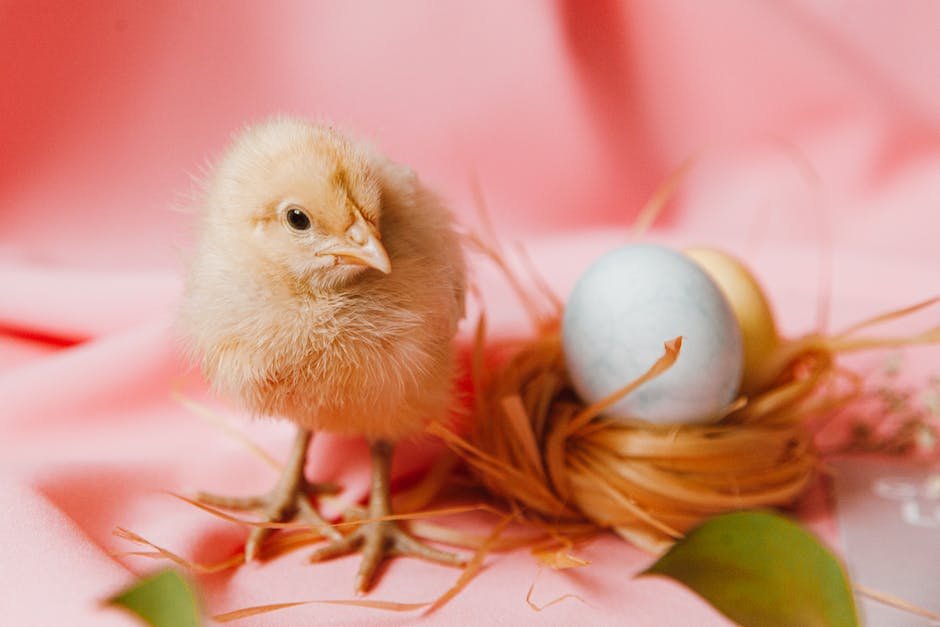Now Reading: How to Build a DIY Off-Grid Chicken Coop
-
01
How to Build a DIY Off-Grid Chicken Coop

How to Build a DIY Off-Grid Chicken Coop
Imagine waking up to the serene sounds of clucking chickens, as the sun peeks over the horizon, casting a warm glow on your own little self-sustaining oasis. Picture a world where eggs are never a supermarket run away, and the well-being of your fluffy-feathered companions is in your hands. Welcome to the enchanting realm of off-grid chicken coops, where feathers, freedom, and innovation collide. In this guide, we will embark on a feathered adventure together, exploring the art of building your very own DIY off-grid chicken coop, allowing you to delve into the world of self-sufficiency, sustainability, and, of course, the quirky charisma of chickens. So, roll up your sleeves, grab your hammer, and let’s create a haven that truly embodies the spirit of independent living.
Table of Contents
- Design considerations for your off-grid chicken coop
- Choosing the right location for optimal sustainability
- Essential materials and tools for a successful DIY chicken coop
- Building a sturdy and predator-proof structure
- Implementing eco-friendly features for a self-sufficient coop
- Q&A
- The Way Forward

Design considerations for your off-grid chicken coop
When it comes to creating an off-grid chicken coop, there are several important design considerations to ensure the comfort and well-being of your feathered friends. From providing adequate shelter to implementing sustainable solutions, here are a few factors to keep in mind:
- Orientation: Position your chicken coop to maximize exposure to sunlight, as it helps regulate temperature and provides natural lighting. This also helps prevent excess moisture buildup in the coop.
- Insulation: Consider using natural and sustainable materials, such as straw or recycled materials, for insulating the walls and roof of your chicken coop. This helps maintain a constant temperature, keeping the chickens warm in winter and cool in summer.
- Ventilation: Proper airflow is crucial for a healthy coop environment. Install adjustable vents or windows to allow fresh air circulation, reducing the risk of respiratory issues. However, ensure that the openings are protected against predators.
- Roosting and Nesting Areas: Create comfortable roosting bars and nesting boxes to provide your chickens with cozy spaces to rest and lay their eggs. Use non-toxic and easy-to-clean materials for their bedding, promoting cleanliness and hygiene.
- Water and Feeding Systems: Incorporate efficient and sustainable water and feeding systems. Consider installing rainwater collection systems for a renewable water supply, and use automatic feeders to minimize wastage and ensure consistent nutrition for your flock.
By considering these design elements, you can create an off-grid chicken coop that not only provides a safe and sustainable environment for your chickens but also reduces your ecological footprint. Your feathered companions will thrive in a space designed with their well-being in mind.

Choosing the right location for optimal sustainability
When it comes to optimizing sustainability, choosing the right location can make all the difference. Here are a few key factors to consider:
1. Access to renewable energy:
One of the most important aspects of sustainable living is reducing reliance on non-renewable energy sources. When selecting a location, it’s crucial to assess the availability and accessibility of renewable energy options such as solar panels, wind turbines, or geothermal systems. These eco-friendly alternatives can significantly reduce your carbon footprint and contribute to a greener future.
2. Proximity to essential resources:
Optimal sustainability also depends on how close you are to vital resources like water, food, and transportation. Selecting a location that minimizes the need for long-distance travel and energy-intensive resource extraction can go a long way in promoting sustainability. Consider areas with access to public transportation, local produce markets, and ample freshwater sources to ensure smarter and more efficient resource management.
3. Climate and ecosystem:
Another crucial factor in choosing a sustainable location is to assess the local climate and ecosystem. Different climates have varying energy demands and resource requirements. For example, if you live in a colder region, ensuring proper insulation and energy-efficient heating systems will be of primary importance. Similarly, understanding the local ecosystem can help you make environmentally conscious decisions that are aligned with preserving biodiversity and reducing environmental harm.
By carefully considering these factors when choosing a location, you can greatly contribute to a sustainable future and create a positive impact on the environment.

Essential materials and tools for a successful DIY chicken coop
When it comes to building your own DIY chicken coop, having the right materials and tools is essential for a successful project. Here is a comprehensive list of everything you will need to create a cozy and functional home for your feathered friends.
Materials:
– **Lumber**: Choose high-quality, pressure-treated lumber that is weather-resistant and durable. Opt for boards of varying lengths and sizes to accommodate different sections of the coop.
– **Hardware cloth**: This galvanized wire mesh will provide ventilation while keeping predators out. Make sure to select a gauge that is appropriate for the size of your chickens.
– **Nails and screws**: Stock up on both galvanized nails and screws for secure and long-lasting construction. Remember to choose the appropriate sizes for the specific materials you are working with.
– **Roofing materials**: Consider using corrugated metal, durable plastic, or wooden shingles for the roof to protect the coop from rain and other elements.
– **Insulation**: Depending on your climate, insulation can help regulate the temperature inside the coop. Fiberglass or foam board insulation can be used to keep your chickens warm during the colder months.
– **Paint and sealant**: Use non-toxic paint and waterproof sealant to protect the wood from moisture and extend the life of your coop.
Tools:
– **Hammer**: A must-have tool for driving nails into the wood.
– **Screwdriver**: Make sure you have both flathead and Phillips screwdrivers on hand to tighten screws securely.
– **Circular saw**: This power tool will help you cut the lumber to the desired size and shape.
– **Staple gun**: Use a staple gun to attach the hardware cloth to the framing and secure other materials as needed.
– **Measuring tape**: Accurate measurements are crucial, so always have a measuring tape handy.
– **Level**: Ensure your coop is level and plumb by using a spirit level during the assembly process.
By having these essential materials and tools ready, you’ll be well-equipped to embark on your DIY chicken coop project. Remember to prioritize the safety and comfort of your feathered friends while bringing your creative vision to life!
Building a sturdy and predator-proof structure
When it comes to constructing a durable and predator-proof structure, there are several key considerations to keep in mind. By implementing proper design techniques and utilizing the right materials, you can create a fortress that will keep your belongings, livestock or loved ones safe from potential threats. Here are some essential tips to help you on your way:
- Quality Materials: The foundation of any sturdy structure lies in its materials. Opt for robust and long-lasting components that can withstand both time and external forces. Reinforced concrete and steel are excellent choices, providing exceptional strength and resilience.
- Secure Entrances: A weak point in your structure can compromise its effectiveness against predators. Install strong doors and windows using materials like solid wood or reinforced glass. Additionally, consider adding additional security features such as heavy-duty locks or a double-door system to create an extra barrier.
- Smart Design: The layout and structure of your building play a crucial role in its ability to withstand predatory threats. Consider incorporating features such as reinforced corners, sturdy roofing materials, and well-placed lighting to deter potential intruders. Remember, a well-designed structure not only improves safety but also enhances its overall functionality.
By following these guidelines and employing a creative approach, you can construct a sturdy and predator-proof structure that will provide you with peace of mind for years to come.
Implementing eco-friendly features for a self-sufficient coop
Creating an eco-friendly coop not only benefits the environment but also promotes sustainability and self-sufficiency. By implementing these features, you can reduce your carbon footprint while providing a healthy and comfortable home for your flock. Here are a few innovative ideas to incorporate into your coop:
- Solar panels: Installing solar panels on the roof of your coop can harness the power of the sun to generate electricity. This renewable energy source can help offset your energy consumption and lower your electricity bills.
- Rainwater harvesting: Collecting rainwater can provide your chickens with a sustainable source of water. Implement a rainwater harvesting system that directs water from the coop’s roof into a storage tank or barrel. This water can be used for drinking, cleaning, or irrigation purposes.
- Composting system: Creating a composting system within your coop can help manage waste effectively and produce nutrient-rich compost for your garden. Consider using deep litter bedding, which consists of organic materials like straw or wood shavings, and regularly turn the bedding to speed up the decomposition process.
- Insulation and natural lighting: Use eco-friendly insulation materials like recycled denim or straw bales to maintain a comfortable temperature in your coop. Additionally, install windows or skylights to maximize natural lighting during the day, reducing the need for artificial lighting.
- Vegetable garden: Utilize the space around the coop to grow a mini vegetable garden that can provide fresh produce for both your chickens and yourself. By incorporating companion planting techniques and using organic methods, you can create a self-sustaining cycle that benefits both your flock and your table.
Remember, implementing these eco-friendly features is not only good for the environment but can also make your flock healthier and happier. Get creative, explore new ideas, and enjoy the rewarding experience of building a self-sufficient coop.
Q&A
Why should I build an off-grid chicken coop?
Building an off-grid chicken coop allows you to raise your own chickens and have a sustainable source of fresh eggs. It also gives you the freedom to become more self-sufficient and reduce your reliance on traditional food systems.
What materials do I need to build an off-grid chicken coop?
You will need materials such as wood for the frame, chicken wire for the walls, metal roofing for shelter, and various tools for construction. Additionally, you may also need nesting boxes, perches, and feeders to ensure your chickens are comfortable and well-cared for.
How can I ensure my off-grid chicken coop is energy-efficient?
To improve energy efficiency, consider insulating the coop using straw, hay, or recycled materials. You can also install solar panels to power lighting, heating, and ventilation systems. Implementing proper insulation and renewable energy sources will reduce your environmental impact and lower long-term costs.
How should I plan the layout of my off-grid chicken coop?
When planning the layout of your coop, prioritize functionality and ease of access. Ensure there is enough space for the chickens to move freely, and include separate areas for nesting, roosting, and feeding. It is also essential to design the coop in a way that allows for easy cleaning and maintenance.
What is the best way to protect my off-grid chicken coop from predators?
A successful strategy for predator protection involves using strong, durable materials like metal or sturdy wire mesh to construct the coop. It is equally important to install secure locks on doors and windows. Consider burying chicken wire around the perimeter to deter burrowing predators.
How do I maintain an off-grid chicken coop?
Regular maintenance includes cleaning the coop, changing bedding, collecting eggs, and providing fresh water and feed. You should also inspect for signs of wear and tear, such as loose wires or damaged roofing, and make necessary repairs promptly. Additionally, practicing good hygiene and preventing disease outbreaks is essential.
Can I use recycled or repurposed materials to build my off-grid chicken coop?
Absolutely! Using recycled or repurposed materials is not only cost-effective but also environmentally friendly. You can repurpose old wooden pallets or metal sheets for construction and modify them accordingly. However, ensure that any recycled materials used are safe and do not pose any health risks to your chickens.
What should I consider when selecting a location for my off-grid chicken coop?
Choose a location with good drainage to prevent flooding and to maintain a clean environment. Ensure the coop receives ample sunlight for warmth and ventilation. It should also be easily accessible for daily tasks, such as feeding, watering, and egg collection, while being protected from strong winds and extreme weather conditions.
The Way Forward
As you close the final chapter of your DIY off-grid chicken coop journey, take a moment to savor the triumph of creating a haven for your feathered friends. You’ve embarked on a venture that not only provides a sustainable and self-sufficient abode for your chickens, but also showcases your resourcefulness and love for nature.
With each nail hammered, each panel secured, and each cog in the solar-powered system meticulously set into place, you’ve built more than just a chicken coop. You’ve constructed a fortress of safety and comfort, allowing your beloved hens to thrive in a sanctuary that is tailor-made for their needs.
As your self-sufficiency exploits extend beyond the four walls of your coop, you can revel in the knowledge that you’re reducing your carbon footprint and nurturing a harmonious relationship with the environment. Harnessing the power of renewable energy, your off-grid setup effortlessly blends functionality with eco-consciousness—a testament to your dedication to a greener future.
But it’s not just about the practicalities; gazing upon your finished coop, you’ll find beauty in the tiny details and thoughtful design choices you’ve incorporated. From the vibrant colors of the repurposed materials to the meticulous alignment of the nesting boxes, your creativity has breathed life into this humble structure.
And while the fruits of your labor are yours to enjoy, the rewards extend far beyond your personal satisfaction. The clucking of content chickens and the bountiful supply of wholesome eggs offer a sense of fulfillment that money can’t buy. With a deep connection to the food you consume and the animals you care for, you’ll witness firsthand the joys of living a more sustainable and intentional lifestyle.
As you bid farewell to this article and venture into the world of off-grid chicken coops, armed with knowledge and inspiration, remember that the possibilities are endless. Whether you choose to expand your flock or further refine your sustainable practices, rest assured that your coop will stand as a testament to your resourcefulness, ingenuity, and commitment to a more self-sufficient way of life.
So embrace the rewards of your endeavors, take pride in your achievements, and let your off-grid chicken coop serve as a beacon of inspiration to others who seek the path of sustainable living. Together, we can foster a brighter future, one cluck at a time.
As an affiliate, my content may feature links to products I personally use and recommend. By taking action, like subscribing or making a purchase, you’ll be supporting my work and fueling my taco cravings at the same time. Win-win, right?
Want to read more? Check out our Affiliate Disclosure page.





